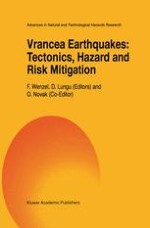This volume contains the most relevant peer-reviewed papers presented at The First International Workshop on Vrancea Earthquakes, held in Bucharest on November 1-4, 1997. Strong earthquakes in the Romanian Vrancea area have caused a high toll of casualties and extensive damage over the last several centuries. With a moment magnitude of 7.4, the 1977 earthquake caused more than 1500 casualties, the majority of them in Bucharest. The contributions address key problems of seismotectonics of the Vrancea area and related strong ground motion, hazard assessment, site effects and microzonation, structural damage and earthquake resistant design, risk assessment and disaster management from an international and regional perspective. This list of topics shows the diverse contributions from the multidisciplinary fields of geosciences, geophysics, seismology, geology, civil engineering, city planning, and emergency relief practices. This book is of value for scientists interested in earthquake hazard and seismic risk research as well as for seismologists, geophysicists and Earth scientists. It is also useful for authorities responsible for public safety and natural hazard mitigation plans and for insurance companies.
